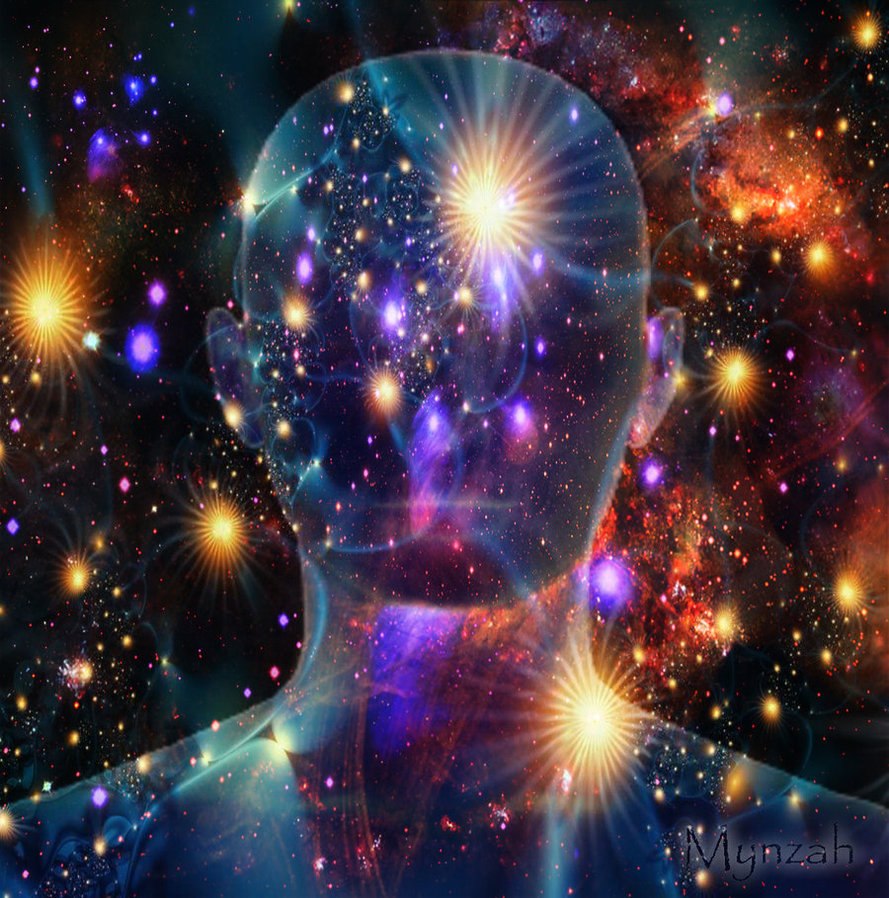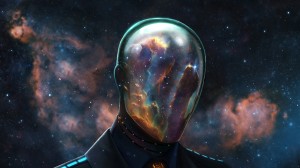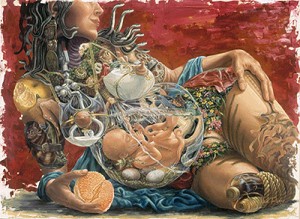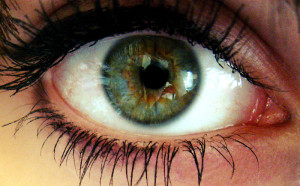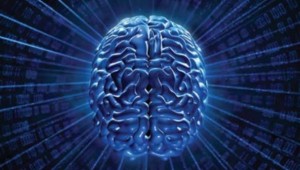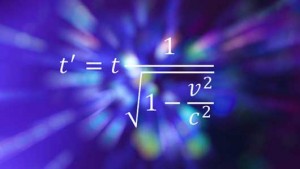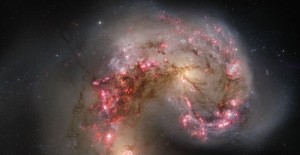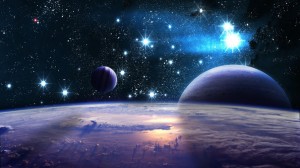In an earlier article, Sensing the Universe, we asked the question: What exactly is the Universe? Most folks seem to agree that brains process the input of senses to create a useful but completely false view — a hallucination, really — of reality.
For one thing, sensations in minds of colors like yellow impart no knowledge whatsoever of the electromagnetic radiation that triggers the color experience.
Colors do not exist in the physical universe at all, right? Color is an illusion that brains conjure to help make certain choices — to enhance survival strategies, probably. Colors exist inside minds, nowhere else, I argued.
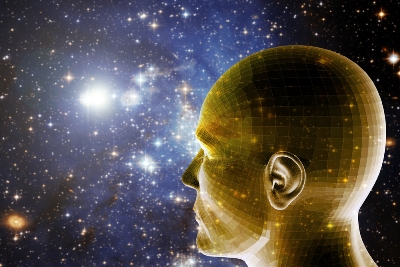
Readers can revisit the earlier essay if they want to better understand this follow-on, which is going to push everyone a few steps farther.
NOTE TO READERS: December 4, 2019: This essay is one of the longest on the site. To help readers navigate, The Editors asked Billy Lee to add links to important subtopics. Don’t forget to click or tap the up arrow on the lower right-side of the page to return to top.
1 — What is Consciousness
2 — Mechanisms of Consciousness
3 — The Billy Lee Conjecture
4 — Perspectives by Scientists
5 — Virtual Particles
6 — Origins of Consciousness
7 — CERN
8 — The Case for Math
9 — Scenarios for Extinction
10 — Shared Consciousness
This post explores the following questions:
Is the universe able to exist apart from conscious life?
Does anything exist apart from conscious experience?
Is it possible to know what exists in a Universe where conscious life is completely absent?
What consequences follow should all answers turn out to be, “no”?

The terms conscious life and consciousness deserve to be defined. For now, it’s better to leave the terms undefined except to say that anyone who reads this essay and believes they understand at least parts of it probably qualifies as conscious life.
As for Consciousness, it doesn’t necessarily require life, does it? How about intelligence? The simplest definition of Consciousness might be awareness. Most scientists and engineers agree that machines can be made aware when they are built right.
But this essay goes further. It suggests that neither machines nor biology are required to generate either awareness or conscious life.
Is there anyone reading this essay who believes I’m right?
Consciousness is likely to be a fundamental and basic property of reality.
It’s true.
Consciousness might be the most fundamental and basic property of the universe. Many philosophers of science agree. Every thinking person in their gut feels on some level that reality is ultimately immaterial, don’t they?
I think so.

These lead-off questions are important.
Why?
Imagine it was demonstrated either by direct experiment or mathematical deduction that — apart from consciousness — the universe could not exist.
The idea is not new nor unreasonable.
Professor Daniel Robinson (1938-2018) University of Oxford.
Watch excerpt at 11:04 to 13:20
Kurt Gödel’s Incompleteness Theorem has dazzled mathematicians since 1931. Douglas R. Hofstadter wrote in a preface to his Pulitzer Prize winning Gödel, Escher, Bach: An Eternal Golden Braid that any formal system based on mathematics (which he believed the universe was) ”…must spew forth truths — inadvertently but inexorably — about its own properties, and … become self-aware…”
What if Hofstadter was right, or at least partly right? What might be some implications?
Well, to begin, it seems necessary that consciousness must exist first before the universe can get going; or at least exist in the same spacetime to give the universe meaning.
What else might logically follow?
Well, again, if consciousness exists first (or concurrently), it must have always existed. Otherwise, the conclusion must be that consciousness bubbles-up from nothing. Human logic seems to require that something not bubble-forth from nothing.
Said another way, if something cannot exist apart from a conscious observer, then consciousness exists forward and backward in spacetime, forever — even if it turns out that the physical universe does not.
Consciousness might have mysterious and not yet understood properties — eternal and fundamental. And it might not be confined to awareness alone. To precede a physical universe, consciousness might have attributes related to causation. A long lineage of quantum physicists bends toward the view that particles don’t emerge from fields in the absence of measurements by conscious observers.
Erwin Schrödinger, the physicist of yesteryear who wrote the quantum wave equation, believed that consciousness existed independently of human beings. Consciousness in his view had a singular quality about it.
No matter how divided the mind, or how schizophrenic an individual, or how many personalities someone might display during their lifetime, consciousness seems always to be singular, Schrödinger wrote. It didn’t manifest itself in pairs or sets or multiples.

Consciousness always has the same familiar qualia as it did in childhood. Even when an individual transforms and grows, learns new skills, gathers knowledge, and is reborn a dozen times — physically and psychologically in life’s many stages of metamorphosis and regeneration — consciousness feels the same. The aura doesn’t change.
To Schrödinger, consciousness was unique, singular, stable, unchanging, and consistent from one human being to another and over any one individual’s lifetime. The quality of consciousness had an invariance about it that seemed atypical for biologically driven attributes.

To Schrödinger, consciousness had to be a phenomenon that lay outside the brain, not inside, as many of his contemporaries insisted. People were simply guessing wrong about consciousness, he said.
It wasn’t the first time. Ancient people once thought the center of consciousness lived inside the heart — until surgeons of the Spanish Inquisition discovered it didn’t.
Consciousness, to Schrödinger, was something people shared, even plugged into, much like folks today plug their televisions into a cable outlet. He attributed his insight to passages read from the Upanishads of ancient India.
Erwin believed that consciousness was an absolute and fundamental feature of the universe; something basic and simple; simpler even than an electron or quark, for example. It could not be accounted for in terms of anything else; certainly not in physical terms of something like what would become the Standard Model, for example.
I mention this view now to let readers know that ideas which might seem strange (and disturbing to some) are coming to anyone who gathers enough courage to read on.
Now might be the time to mention that many animals act like they are conscious. Self-awareness — measured by recognizing oneself in a mirror — might not be a reliable test of awareness in animals. Recognition of self in a mirror is a test of intelligence, which is something different.

Anyway, the prevailing view of science in the 21st century is to take a physical view of the universe and conclude that conscious life arises from physical processes on Earth, certainly, and perhaps many other places in the cosmos yet undiscovered. Since conscious life is assumed to be complex — more complex than particles and forces — consciousness must have developed after the physical universe, not before, most scientists reason.
Science takes the view that complexity evolves from simplicity; it has a direction similar to the arrow of time. Consciousness — invisible; never observed; undiscoverable; lacking any physical attribute that can be measured; indescribable; unknowable except to the individual who experiences it — is assumed to have evolved from physical objects and forces, which can be observed and measured, discovered and manipulated.

Consciousness is like a ghost who inhabits complex life forms on Earth — the holistic result of a grand evolution in the complexity of physical brains. Consciousness is a feature of the brain, science insists; it lies inside the brain though it cannot be found there.
Some have suggested that a structure called the claustrum could play a role. It is an assemblage of mostly identical neurons that looks like a potato-chip embedded in the brains of some animals, including humans. From it run connections to many important structures.
But the function of the claustrum remains a mystery. It might orchestrate the firing of neurons to flip the switch to consciousness. Then again, it might not. No one knows what it does.
Another possible candidate for the fabrication of consciousness is the micro-scaffolding, called microtubules, which support the internal structure of many kinds of cells. They permeate the interiors of soma cells and the root-like structures of brain neurons called dendrites.
NOTE from the EDITORS: This 13-minute video is a somewhat technical explanation of microtubules; interplay with neurons starts at 10:30.
Both Stuart Hameroff — an MD and emeritus professor for anesthesiology and psychology at the University of Arizona — and Nobel Prize winner Sir Roger Penrose — physicist, mathematician, and collaborator of the late Stephen Hawking — are promoting the notion that quantum properties of microtubules inside nerve cells of the brain and heart are the drivers for electrical dynamics of nervous-systems in people and other organisms.
These quantum level structures enable the simplest one-celled organisms — which lack neurons but are scaffolded by microtubules — to perform the neural functions of life.
Penrose and Hameroff are making a claim that the putative quantum behavior of microtubules, which are orders of magnitude smaller than neurons, might enable the subjective feeling of awareness and control that conscious life seems to share.
Some have argued like Schrödinger — see essay What is Life? — that some kind of structures (perhaps micro-tubules) might exist and function like quantum sensors to detect and interact with conjectured proto-consciousness, which is likely to be quantum in nature and foundational to a physical universe like ours.
The putative quantum nature of the brain is a reason why some theorists think entanglement and superposition explain much of the unusual behavior of conscious life.
Other scientists have stepped forward to label as absurd any notion that consciousness is quantum in nature or an intrinsic property of the universe; a few have ridiculed Dr. Stuart Hameroff and Roger Penrose, for aiding and abetting what seems to them like quackery.
But not all.

Consciousness is not, in contemporary consensus, a phenomenon that lies outside the brain (like light), which can be experienced by a life-form once it achieves a certain level of physical development.
Eyes, for example, evolve to detect a narrow band of electromagnetic radiation, which — though pervasive within the universe — is unknowable to life-forms who lack sense organs for vision.
The consensus of modern science seems to be that consciousness is not an intrinsic phenomenon of the universe that can be detected (or imbibed, to use a better word) by physical organisms after they attain a high level of biological complexity.
Most scientists would argue that a physical universe can teem with activity unobserved for billions of years. The universe may not exist for conscious life to observe until the universe creates it through an ageless process of evolution.
At the point when the universe manufactures conscious life, it acquires for itself a history and a definition determined by the life it brought forth, which now observes it. This idea seems reasonable until one understands that some of the most brilliant philosophers, many fluent in mathematics and sciences, disagree.
One popular opponent of this view is Australian David Chalmers who argues that consciousness is a fundamental requirement for a physical universe like our own; it predates life-forms such as humans.
Even a hard-headed scientist like Erwin Schrödinger, who gave the world the mathematics of the quantum wave function, imagined that quantum structures in the brain, should they exist, serve simply to connect (or entangle) the living to universal consciousness, which resides somewhere, somehow, outside brains, where it operates as the, perhaps, fundamental, intrinsic, and foundational property of the cosmos.
The smartest people who ever lived disagree about the nature of conscious life.
Why wouldn’t they?
None understand anything at all about what everyone calls the “hard problem.”

 . Energy and massless particles like photons of light are equivalent based on their frequencies; Einstein included this feature in his less familiar but expanded equation
. Energy and massless particles like photons of light are equivalent based on their frequencies; Einstein included this feature in his less familiar but expanded equation  . These equivalencies are clues that might enable someone to properly explain how the universe works on large scales and small.
. These equivalencies are clues that might enable someone to properly explain how the universe works on large scales and small. Virtual Particles
It might be worthwhile to pause a moment to examine another phenomenon about which physicists are in actual agreement. Taking a more wide-angled view of the universe should make conscious-life easier to think about and understand.
Because when anyone thinks about it — really thinks about it — what could be more unlikely than something dead — like a singularity that goes bang — bringing forth something that is not only alive but also conscious?
Anyhow…
Everyone seems to know that particles appear and disappear spontaneously in a vacuum. This phenomenon — observed by physicists whenever they look anywhere at sub-atomic scales — gives the impression, at least temporarily and on the shortest time intervals, that something is being created out of nothing. Some argue that virtual particles aren’t real; they are by-products of the mathematics that describe quantum events. Others say no; virtual particles are as real as anything else observed in physics.
One popular explanation is that of science writer, Timothy Ferris, who wrote in a recent National Geographic article, ”Space looks empty when the fields languish near their minimum energy levels. But when the fields are excited, space comes alive with visible matter and energy.”
In other words, the apparent vacuum of space is an illusion that misleads observers about an underlying and hidden reality that includes pervasive fields of energy permeating all of space.
The positive and negative values of matter, energies, and forces of the entire universe sum to zero, theoretical physicist Stephen Hawking wrote. But quantum uncertainties at every Planck-sized point in space oscillate about zero between positive and negative values. At this moment countless fluctuations across the vast expanse of space are skewing the balance — perhaps temporarily — into the structure of space and time, matter and forces, scientists observe.
My question is this: what is it that skews the balance of quantum fluctuations into a universe where humans can live in and observe? What brought the universe with its array of unlikely settings and its many arbitrary but exquisitely fine-tuned constants into the precise configuration required for the emergence of conscious life?

As Stephen Hawking made plain to non-scientists in his book, The Grand Design, there’s really nothing here. Not when it’s added up. The values of matter and energy add to zero. He speculated that the odds against a universe configured like ours could be as high as 10 followed by 500 zeros to one.
The number is so large that it might as well be infinity. It’s not possible for most people to say a number this big using only the words billion or trillion. They have to say a billion times a billion 56 times in a row without losing track — probably impossible. Or they could say a trillion times a trillion 42 times — not much easier.
It turns out that the only sure way to create a universe with conscious life by pure chance is to start with a multiverse populated by a number of universes equal to 10 followed by 400 zeroes multiplied by the entire number of protons and neutrons that exist in the one universe we know about — this one. Take a deep breath.

As mentioned before, everything observed in the universe seems to be the result of quantum uncertainties that hover around and sum to zero, both on small scales and large. Can uncertainties around a zero-sum reality give rise to consciousness?
Is it really uncountable trillions upon uncountable trillions of universes in an unimaginably large multi-verse that makes the existence of conscious human beings inevitable? Or is there some other mechanism which has drawn a single universe suitable for life out of the quantum fires of non-existence?
It’s a simple question. If the concept of a multi-verse turns out to be fantasy, then what is left? One solution to consider is that some form of conscious-life, fundamental and eternal, skewed the numbers and somehow imagined the universe into existence by a process that seems thus far unknowable.
What else could it be?
Think about it.
Without an unimaginably large number of universes, it’s not really possible for physical laws to configure themselves by chance into a universe with conscious life. It’s not realistic. Stephen Hawking said the odds are overwhelmingly against it; the chance might as well be zero, he said.
Take another breath.
EDITOR’S NOTE: July 4, 2019: Billy Lee published an essay today describing Roger Penrose’s conjecture about the origins of the Universe called Conformal Cyclic Cosmology (CCC) or ”Eon Theory.” Recently launched satellites are gathering supporting evidence but the conjecture has not yet been embraced by mainstream cosmologists. Click the links to learn more.

Stephen Wolfram in his book, A New Kind of Science, argues that a simple sequence of iterative quantum events which repeat and branch out according to a simple set of rules could, given enough time, generate a complex universe. Discovering what these simple rules might be has so far proved daunting. Presumably, the rules and events for such a sequence would have natural origins and create many universes out of the quantum uncertainties present in natural sets of initial boundary conditions.
Who knows?
One thing is certain. If it is ever proved that multi-verses are fantasy — if it is demonstrated that our universe is the only universe — then the argument for a conscious-life which has somehow imagined everything into existence is strengthened.
But it can’t be confirmed unless scientists establish that the so-called big bounce does not happen. If cosmologists show that the universe is in fact a one time non-repeatable event, then the case for a universe-generating conscious-life will be compelling if for no other reason than that the odds against a spontaneous one-time creation of a universe with unique and unlikely parameters are infinite.

One cosmologist who has gone on record against the possibility of a big-bounce scenario is Sean Carroll of Caltech. He has said that there is enough dark energy to drive an infinite expansion of our universe into a kind of entropic death.
His assertion, if proven true, seems to strengthen the argument for proto-conscious-life except that he also said that the whole of reality is probably a multi-verse populated by the births of trillions upon trillions of Big Bang events — which weakens the argument.
It seems that a definitive answer to the question of whether we live in a multi-verse (or not) might be a key indicator for or against the presence of a fundamental and foundational consciousness in nature.

In 2013 a new theory was proposed that argues against a multiverse. It was proposed by Paul Steinhardt, the Albert Einstein Professor of Science at Princeton University. His team’s idea is based on data gathered by the state-of-the-art Planck Satellite launched in 2003 to map the infrared cosmic background radiation.
The theory is ekpyrotic, or cyclic, and asserts that the universe beats like a heart, expanding and contracting in cycles with each cycle lasting perhaps a trillion years and repeating on and on forever.
Steinhardt was once a major advocate for the Big Bang theory and the mechanism of cosmic inflation. He had been a prominent proponent of the inevitable multi-verse that most versions of the Big Bang theory permit. He is now proposing an alternative scenario.
His latest theory has the advantage that it makes certain predictions that can be tested — unlike the mechanism of inflation required by the Big Bang theory, which can’t. In his new theory, every bounce of the universe resembles every other bounce and presumably generates similar constants, laws, and physics. If conscious-life is rare, most bounces will spawn a sterile universe.
If the idea is right, fine tuning of our universe would have to be the natural result of some underlying feature of reality not yet understood. In this model, consciousness can emerge, certainly, but is not necessarily fundamental, causative, shared, or even inevitable.
To my mind, this is the model of the universe that is the most compelling, the most incomprehensible, the most mind-blowing. Unlike all other theories, this one suggests that the universe might have no beginning and no end. It doesn’t change. It’s eternal. It beats with a familiar rhythm, the rhythm of our hearts, and it will never stop.
What is frustrating to me is that the ekpyrotic model doesn’t add insight into the question about conscious-life posed by my essay: Is consciousness a fundamental and necessary feature of physical reality?
Or is conscious life a rare accident that occurs inside a long path of infinite oscillations in a universe whose reason for being humans will never understand?
Editor’s Note: As of July 2017, studies of the cosmic background radiation have not revealed with high enough statistical precision the presence of primordial B-mode gravity waves — a discovery which, if confirmed statistically by high sigma, would undermine the ekpyrotic theory. Refinement of the search and examination of data continues. Right now, the ekpyrotic theory is hanging by a statistical thread.
Editor’s Note July 4, 2019: Another theory gathering supportive evidence is the Conformal Cyclic Cosmology model (CCC) proposed by Roger Penrose. Click the link to learn more.
I want to veer back to the previous discussion about matter and antimatter for a moment. It seems that each precipitates equally out of the energy enriched dimensional fields of spacetime so that in a smooth, un-pixilated universe matter and antimatter should self-annihilate and sum to zero. (Refer to the Billy Lee Conjecture in a prior illustration.)
A universe whose space is smooth and continuous will not self-generate anything at all from such a process. It is the geometry of a spherical bubble within a pixilated space-time fabric that forces surplus in the production of either matter or antimatter.
The choice between the two is completely determined by the size of the pixels that make up the fabric of spacetime because pixilation of spacetime forces the normally irrational ratio of the surface area of a sphere to its diameter to collapse to a rational number, which necessarily warps the symmetry of the sphere. If matter is generated inside multi-dimensional bubbles, any reduction to rationality that compels symmetries to fail will force an excessive production of one of the two possible states of matter. It can’t be any other way.
Some physicists believe matter (and its equivalent, energy) is pixilated at the scale of the Planck constant, at least in this universe. Experiments are underway to find out if this idea is true. For now, scientists observe mathematical evidence for mysterious particles coming into and out of existence everywhere all the time. And it is matter particles which seem to completely dominate anti-matter.
To counterbalance this preponderance of positive matter, negative energy must emerge, which scientists like Isaac Newton called gravity.
Einstein showed that matter and energy are equivalent; they are two sides of the same coin. He treated gravitational energy as a deformation by mass in a mathematical fabric he referred to as spacetime. Massless phenomenon like photons of light held energy by means of their electro-magnetic field frequencies.

We know that this phenomenon of spontaneous creation of positive matter (or frequency) and negative energy is occurring, because conscious minds (scientists) observe its effects in their laboratories. No one understands the mechanism of quantum fluctuations enough to rule out the possibility, it seems to me, that our own minds — in collusion with the instruments we have invented and built — somehow create the impression — a kind of illusion, really — of phenomena that can occur only in the presence of a conscious mind.
Is it possible, for example, that inside the European Organization for Nuclear Research (CERN), scientists are creating the particles they want to see in order to confirm their parochial notions of the universe? They sometimes seem to be using their conscious minds and the machines they have designed to fabricate new worlds so remote and so tiny that they will never be observed, not by any human, not even by themselves, except in their imaginations as they read through publications of the results of their experiments in science journals.

Are theses scientists creating particles in worlds that lie deep within the subterranean matrix of exotic materials and forces they have built and modeled within their labyrinth of super-computers — which exist only in their imaginations, but which they are able to confirm by employing thousands of researchers around the world to pour over hundreds-of-thousands of pages of machine and sensor-generated gibberish, from which they glean the unlikely patterns they marvel-over in their peer-reviewed scientific publications?
Are these human beings, these scientists, in the first stages of using pure consciousness to create universes — albeit tiny ones — in the mammoth laboratories of CERN?
Maybe not. It seems preposterous. But it is a conspiratorial perspective I couldn’t resist including in my essay. Sorry.
Sean Carroll, in his book about CERN, The Particle at the End of the Universe, describes in chapter-six subsections — Information Overload and Sharing Data — that the data-handling and sampling processes used at CERN could enable just such self-fulfilling validations to occur absent careful and conscientious oversight.
There may be another reason why experiments always seem to confirm the Standard Model of quantum physics and never contradict it. A strange symbiosis between the standard model of sub-atomic reality — as measured by synchrotrons, accelerators, colliders, etc. — and mathematics may actually exist in nature.
If true, no one need despair that gathering resources to build larger colliders and other instruments is not practical. Theoretical physicists can simply do math to discover new truths. They can trust — should an experiment ever be completed in some unimaginably resource-rich future — that their math-based conjectures will be confirmed in the same way as was the Higgs boson.

Absent larger colliders, the path forward, according to theoretical physicist Nima Arkani-Hamed, is to keep the work of discovery inside the experimental constraints imposed by the knowledge already gathered, as theoreticians labor to develop new theories.
These constraints are already so restrictive and so reduce the number of paths to truth that it’s possible someone might find a route to understanding which is unique, sufficient and exclusive. If so, theorists could have confidence in the new theories though experimental verification might lie beyond any foreseeable technology of the future.
Anyway, the universe shouldn’t exist, it seems, except that people can imagine — under the influence of the uncertainty in the remote decimal place described earlier — that tiny differences in the ratio of matter to antimatter which emerged in the ancient past created an imbalance — temporarily, perhaps, but continuing for billions of years — which piled up to become enormous. As matter continued to pile up, so did the negative forces like gravity, which counterbalanced it.
One day, gravity (and perhaps other forces like the mysterious and long sought-for dark energy) might pull all the positive matter back into a little pile; pull it back behind the event-horizon of what Stephen Hawking calls a black-hole; pull it back into the unfathomable uncertainties of a blinking and unstable quantum singularity aching to explode.
Explode into what? Perhaps the next quantum eruption will spiral out into a new and completely strange universe of different-valued fundamental constants and a bizarre number of dimensions — a universe almost certainly unsuitable, this time around, for life.
Is it possible that such a process — driven by tiny uncertainties (or tolerances) in the natural quantum ratio of matter to antimatter within a rare configuration of fundamental constants and numbers of dimensions — could give rise to not just any universe but to one with an emergent conscious life as well?
Stephen Hawking has speculated that it can, but cautions that the odds against life are huge. He has speculated that an infinite number of universes — a multi-verse — is required to get a reasonable chance that a universe as unique and unusual as ours will appear.

Modern science agrees with Hawking and has decided that this universe — the one we live in now — is probably only one of an infinite number of universes that make a multiverse. Our unique and unusual universe has, over billions of years, fabricated a transient conscious life which is, at this very moment, observing it.
A fleeting conscious life is discovering that the universe hovers in a state which from a matter/antimatter perspective could — if a preponderance of antimatter were produced (perhaps in an adjacent universe, if not this one — sum to zero someday like a popping soap bubble and cease to exist. When the observing conscious life is extinguished during this possible zero-sum resolution in the distant future, the result will be no universe, no life, no memory, nothing.
In any event, if antimatter doesn’t annihilate the universe, entropy might. (Entropy is the natural process of heat death, where all motion and information decay to zero over time.) Under this scenario, when the end comes, in the far distant future, it will be said (were there anyone around who could say it): the universe never happened. It will become a vanishing blip on the screen of reality, because no one will remain to remember it.
Then again, the negative forces of gravity and dark energy might restore the zero balance required by quantum non-existence to pull together all positive matter into an uncertain quantum singularity called the Big Crunch. A new universe with new parameters and constants might then emerge after the singularity undergoes a quantum fluctuation.
Maybe the universe cycles endlessly, contracting and expanding like a beating heart, which some have characterized as a Big Bounce. During some expansions conscious-life emerges; in most others, though, it does not.
Another theory of a possible catastrophic scenario has recently emerged after scientists determined the mass of the Higgs ”particle” at CERN in March, 2013. It turns out its value might permit the Higgs field to someday (no one knows when) undergo a spontaneous phase transition.
A phase transition would change the value of many of the fine-tuned constants and forces that shape the chemistry and biology of the cosmos. A phase transition in the Higgs field would certainly be catastrophic for life. It would be as if the universe was a block of ice for billions of years and in one short spasm turned to steam.
In any event, a Higgs field phase-transition would obliterate all knowledge of the universe. All history of the existence of a missing universe from the recent (or ancient) past would be lost — unable to be reconstructed, detected or proved. The universe didn’t exist; it never existed. In fact, it could not have existed.
One dynamic that no one talks about is a mass of parallel universes stacked like pancakes on all sides of our own. The mass that lies outside our own universe might be dense enough to transmit a gravitational tug that is pulling our universe apart like an expanding soap bubble in a field of foam.
This external mass might drive an expansion that provides the energy that forces galaxies to rotate at their far reaches faster than physicists think they should. Mass outside our universe could transform the metrics of our own space-time to initiate someday the phase transformation in the Higgs field that would follow a runaway expansion — an expansion that ends in nothingness, like a soap bubble popping on a grand scale.
The consequence of zero-sum, under which matter and antimatter, like popping soap bubbles, add to nothing;
or entropy, where all the material and information in the universe decline and decay by cooling and freezing to a motionless absolute zero;
or the big crunch, where negative forces pull positive matter into a quantum singularity which fluctuates into one of an almost infinite number of new realities;
or an endlessly repeating big bounce, where the universe contracts and expands like a beating heart that is driven by a set of fundamental constants that never really change — though the history of every bounce is erased by the bounce that follows;
or an inevitable phase transition in the Higgs field which vaporizes the cosmos into a state of virtual non-existence…
…means, logically, and in the perfect hindsight of an imaginary observer billions (or, perhaps, trillions) of years from now, that the probability there ever was a universe of matter populated by conscious-life might actually be zero.

Yes, scientists say, under every scenario they can imagine, the universe in which humans now live will cease to exist. Conscious-life will disappear. No one will be left to argue about it. All the evidence will point to a universe that never happened.
Of course, no one will hear the evidence. In the universe that doesn’t exist, and even in an existing universe where conscious-life cannot or does not emerge, there is no reality, there is no evidence, no information, no history.
EDITORS NOTE: July 4, 2019: Based on the recent theory by Roger Penrose it may not necessarily be science-fiction to imagine that intelligent life might communicate across successive universes using the cosmic background radiation as a kind of writing tablet. As crazy as the idea sounds, evidence gathered by recent satellites is making a statistical case for Conformal Cyclic Cosmology.
These views, as I understand them, reflect the most popular ideas in modern science about the universe and conscious-life. They make sense. But these views reek with futility and despair. And, despite sensibility, they fail to answer a basic question: how can this be?

How is it that random fluctuations in the aether (for lack of a better term) generated something on the scale and immensity of a universe; perhaps an infinity of universes; and gave birth to conscious life?
The mere existence of a universe (and its conscious life) emanating from uncertain and random fluctuations in the vast nothingness of nothing seems ludicrous on its face. We can’t make sense of it; not in any way that permits us to exhale, throw out our arms and say, ahhhh… so that’s how it works.
We are missing a piece of the puzzle. It seems that modern science has led us into a tunnel that has no light at its end.

What is anyone to make of all this? On the one hand, there is a consensus among contemporary scientists who believe consciousness results from the way brains are hard-wired. Throw in enough parallel electrical circuits to reach a threshold, add in sufficient hormonal feedback loops, and, voila! — consciousness. One problem, though: no one has done it; not yet.
On the other hand, we hear the echoes of the voice of one of the fathers of quantum physics, Erwin Schrödinger, calling from the shadows of recent history. He says, No! Brains are detectors, imbibers, of a consciousness that lives outside ourselves and is, in fact, a fundamental and foundational feature of reality. Like the mysterious electromagnetic radiation that pours into our skulls to excite our brains into conjuring up the brilliant colors we see inside our heads, consciousness pours into us from out there.
Like the unseen and as yet undiscovered dark matter and dark energy that many scientists believe together shape the universe and drive its expansion, consciousness remains elusive of attempts to discover it. Perhaps scientists aren’t looking hard enough or in the right places.
Then again, maybe dark matter doesn’t exist and will never be found, if alternative theories like MoND (modified Newtonian dynamics) prove true. It might be that the shape of galaxies and the accelerating expansion of space are instead the evidence of parallel universes that stack like pancakes against our own universe to add the elusive gravitational forces necessary to both constrain the galaxies and drive the expansion of space. Who knows?
It might be that MoND and the gravitational tug of parallel universes work together to produce the odd cosmology astronomers are observing with today’s modern space sensors. Constructing a successful model of the universe which incorporates the reasonable conjectures of MoND might depend on a collaborative summation of forces that occur both inside and outside of our own universe.
What the universe is and how it really works is not yet understood by the scientists who line up for funding before governments and universities; not even close.

In any event, under the stimulation of consciousness, all seem to know on some level deep inside that they are alive and aware and connected, somehow. They feel a certain common awe when they look up into the night sky and see the universe that birthed them; folks seem to sense a Conscious-Life who stands behind it all; who knows and cares about them; who shares with them the glorious experience of the universe. It’s the religious experience that every culture on the earth has in common.
What if this experience is real? What if we are connected in some way to a fundamental and eternal Conscious-Life who brought the physical universe we know into existence, perhaps through pure thought like we imagined earlier the scientists at CERN might be learning to do?
Is this a question worth exploring?
Does consciousness come first or last?
Is an answer within our grasp that will satisfy our yearning for truth and certainty? Or is it a dispute that will never be settled?
Tobias Dantzig, the Latvian author of Number (one of Albert Einstein’s favorite books), once claimed, …from the standpoint of logic either hypothesis is tenable, and from the standpoint of experience neither is demonstrable.
Can he be right? Will the arguments between hard-headed scientists and stubborn philosophers last forever?
I don’t think so. Scoffers may say no, the dispute is already settled. Schrödinger was wrong. And if he wasn’t wrong, could anyone detect the difference? Does it matter at all if consciousness lives inside our heads, or if brains draw consciousness from the universe outside?
I believe the issue can be settled. And it is important. The stakes for humans are enormous. In religion, philosophy, politics, and government what people do, the way they live, their planning for the future; the ways they choose to live out their lives and organize their societies, humans seem to be grounding every decision, every action, every moral choice they make on an assumption that each person creates inside themselves a unique view of reality, which will die when they do.
But what if they are wrong?

What if we learned that, though our bodies may someday die, consciousness never dies; the feature of our existence which imparted the sensation of awareness was something our bodies fed on during their brief lives to give them meaning?
What if our kids and grandkids, our friends and neighbors, even our enemies, and all those that came before us and will someday come after us imbibe alike from this same life-enhancing pool of awareness?
What if all life-forms, sufficiently developed, drink from an ocean of Conscious-Life everywhere in the universe?
What if we learn it isn’t our bodies that make us feel alive?
It is instead a fundamental and basic feature of the universe, a sea of consciousness from which we all drink while our bodies live.
What are the consequences should we learn that, though our bodies and brains may decay to dust, the awareness that makes us feel alive never does?
What if we learn we are conscious-life and always will be?
Billy Lee
Addendum by the Editorial Board, 16 September 2018: Michael Egnor is not a public person; his biography on Wikipedia is hopelessly incomplete. Nevertheless, he has performed a number of neurosurgeries, apparently, where outcomes ran counter to popular theories about how the brain and consciousness work.
On September 14 Michael Egnor published in Christianity Today a non-scientific article where he wrote about his clinical experience. Billy Lee strongly argued against publishing a link to his article, but The Editorial Board, unanimously overruled.
Seen through the prism of Billy Lee’s essay, we agree that the article contains clues that readers might find helpful despite the surgeon’s biases — one or two of which Billy Lee might characterize as kind of silly. Here is the link: More Than Material Minds. The Editors
Thanks to Erwin Schrödinger for his Mind and Matter lectures at Trinity College, Cambridge, Oct. 1956 for inspiring me to write this article; see Schrödinger , What is Life? available at Amazon.com
Billy Lee

